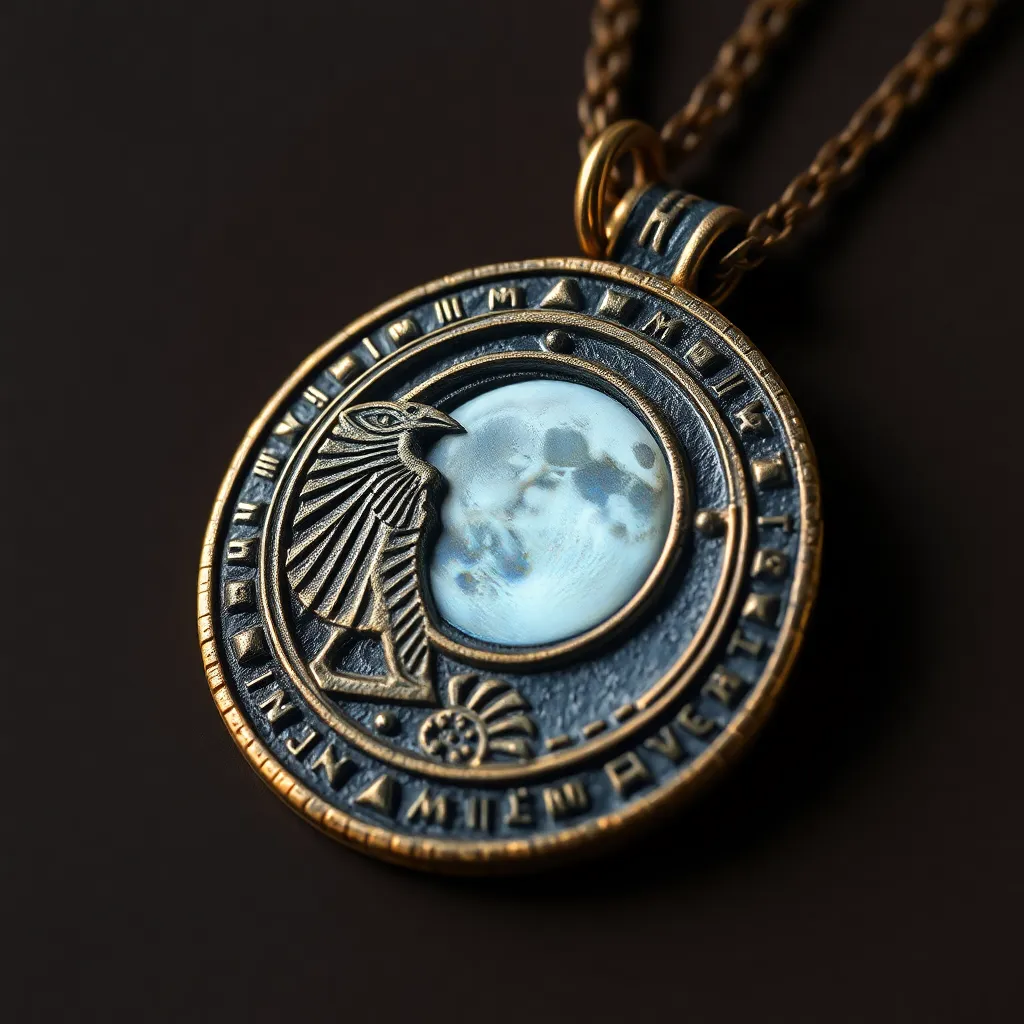The Amulet of Khonsu: God of the Moon and Time
I. Introduction
Khonsu is a significant deity in ancient Egyptian mythology, revered as the god of the moon and time. His influence permeates various aspects of Egyptian life, symbolizing the cycles of time and the protective qualities attributed to lunar deities. The Amulet of Khonsu serves as a powerful emblem of his divine presence, believed to offer protection and guidance to its wearer. This article aims to explore the historical background of Khonsu, the symbolism of the moon in ancient Egypt, the design and functions of the amulet, archaeological discoveries, and its continuing impact on contemporary culture.
II. Historical Background of Khonsu
Khonsu’s origins can be traced back to the early periods of Egyptian history, where he evolved from a minor lunar deity to a significant figure within the pantheon. Initially associated with the moon’s phases, Khonsu became known as a protective god, often depicted as a youthful figure with a sidelock and a lunar disk on his head.
Key myths and legends illustrate Khonsu’s importance. In one such myth, he is depicted as a healer, able to cure the sick and protect the vulnerable. Another legend tells of his role in the celestial hierarchy, where he supports the sun god Ra during his nightly journey through the underworld.
Khonsu held a crucial role in Egyptian religion and society, often associated with the concept of time, as the lunar cycles were essential for agriculture and religious festivals. His temples were places of worship and healing, highlighting his importance among the gods.
III. Symbolism of the Moon in Ancient Egypt
The moon held profound cultural significance in ancient Egyptian life, representing the passage of time and the cycles of nature. It was associated with fertility, renewal, and the rhythms of life. The Egyptians observed the lunar phases to inform their agricultural practices and religious calendars.
Khonsu’s association with timekeeping is particularly noteworthy. The lunar calendar guided the timing of festivals, planting, and harvesting. The moon was seen as a timekeeper, marking the hours of the night and the changing seasons.
Furthermore, Khonsu’s connection to lunar cycles emphasized the importance of balance and harmony within the universe. The waxing and waning of the moon mirrored the cycles of life and death, reinforcing the belief in rebirth and regeneration.
IV. The Amulet: Design and Material
The Amulet of Khonsu is typically depicted in the shape of a crescent moon or a seated figure of the deity himself. It is often adorned with intricate designs that symbolize protection and guidance.
Common materials used in the creation of the amulet include:
- Gold
- Silver
- Faience
- Stone
Artistic styles of the amulet vary, reflecting the periods of ancient Egyptian art. Inscriptions often include prayers or dedications to Khonsu, emphasizing the amulet’s protective qualities and its role as a conduit for divine favor.
V. Functions and Uses of the Amulet
The Amulet of Khonsu was believed to possess numerous protective qualities. It was commonly worn by individuals seeking safety from illness, misfortune, or evil spirits. The amulet’s association with the moon endowed it with further significance, as the moon was seen as a guardian during the night.
In addition to its protective qualities, the amulet was used in various ritualistic and ceremonial contexts. Priests would often use it during ceremonies to invoke Khonsu’s blessings and ensure the well-being of the community.
The amulet also served as a talisman for timekeeping and guidance. Individuals would consult the amulet during significant life events, such as births or marriages, to seek Khonsu’s favor in their endeavors.
VI. Archaeological Discoveries and Significance
Numerous archaeological finds related to the Amulet of Khonsu have provided valuable insights into ancient Egyptian culture. Excavations in temples and burial sites have uncovered various versions of the amulet, each contributing to our understanding of its role in society.
Notable discoveries include:
- Amulets found in tombs, indicating their importance in the afterlife.
- Depictions of Khonsu in temple reliefs, showcasing his veneration.
- Artifacts associated with lunar rituals that highlight the significance of the moon in religious practices.
The insights gained from these discoveries have illuminated aspects of daily life, religious beliefs, and the artistic expressions of the ancient Egyptians, emphasizing the role of Khonsu and his amulet in their culture.
VII. The Amulet of Khonsu in Contemporary Culture
The influence of Khonsu and the Amulet of Khonsu has permeated modern art and literature. Artists and writers have drawn inspiration from the rich symbolism associated with the moon, time, and divine protection, often reinterpreting these themes in contemporary works.
There has been a resurgence of interest in ancient Egyptian symbols, including the Amulet of Khonsu, within the realms of fashion, jewelry design, and spiritual practices. Many people today wear replicas of the amulet as a symbol of protection or as a connection to ancient wisdom.
In modern spiritual practices, the amulet is often used as a talisman for guidance and reflection, embodying the timeless connection between the past and the present.
VIII. Conclusion
The Amulet of Khonsu remains a powerful symbol of protection, guidance, and the passage of time, reflecting the enduring legacy of Khonsu in contemporary society. Through exploration of its historical background, cultural significance, and artistic representations, we gain insights into the profound impact of this ancient deity.
As we reflect on the importance of the Amulet of Khonsu, we are encouraged to delve deeper into the rich tapestry of ancient Egyptian mythology and artifacts, discovering the timeless wisdom they offer.




